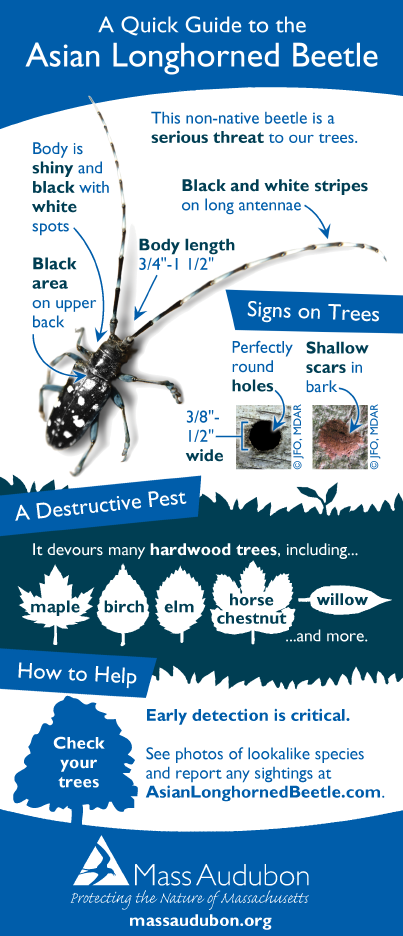 The non-native Asian longhorned beetle (ALB) is a serious threat to our maples and many other hardwood trees. The larvae dig deep into the heartwood; infected trees cannot be saved. Tens of thousands of trees have already been lost in the northern and central US.
The non-native Asian longhorned beetle (ALB) is a serious threat to our maples and many other hardwood trees. The larvae dig deep into the heartwood; infected trees cannot be saved. Tens of thousands of trees have already been lost in the northern and central US.
In fact, it’s such a severe threat that the USDA has designated the beetle’s most active month—August—Tree Check Month. With early detection, infestations can be stopped in their tracks.
How to Identify
The ALB infests hardwood trees, such as maple, birch, horse chestnut, poplar, willow, elm, and ash. Signs of an infestation include:
- Perfectly round, dime-sized (approximately 3/8 of an inch or 1 cm in diameter) holes with smooth edges left by adult beetles exiting a tree
- Shallow oval scars in the bark (1/2-3/4 of an inch, or 1.3-2 cm wide) where the eggs are deposited.
- Sawdust-like material on the ground around the trunk or on tree limbs
- The beetle itself. The mature ALB is shiny black with white spots, measures 3/4 to 1 1/2 inches (2-4 cm) in length, and has two antennae up to four inches (10 cm) long. There are several lookalikes; to help, the USDA complied a look-a-likes chart.
Learn more
Read our primer on this species, explore AsianLonghornedBeetle.com, and share our Quick Guide to help us spot and stop it!


live in the Worcester area, haven’t seen one yet. Though I think my boss has